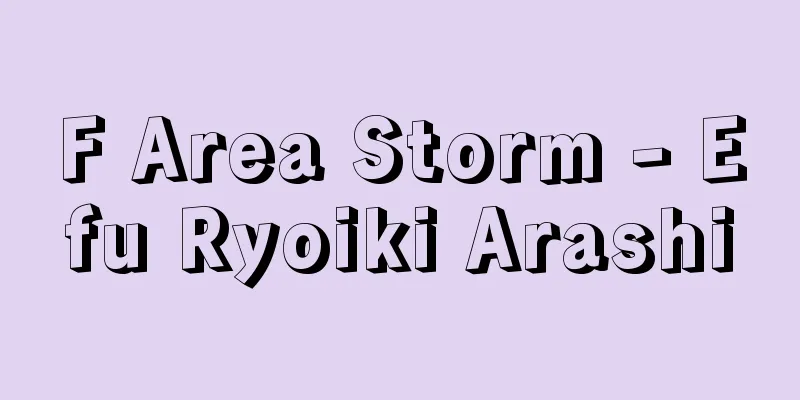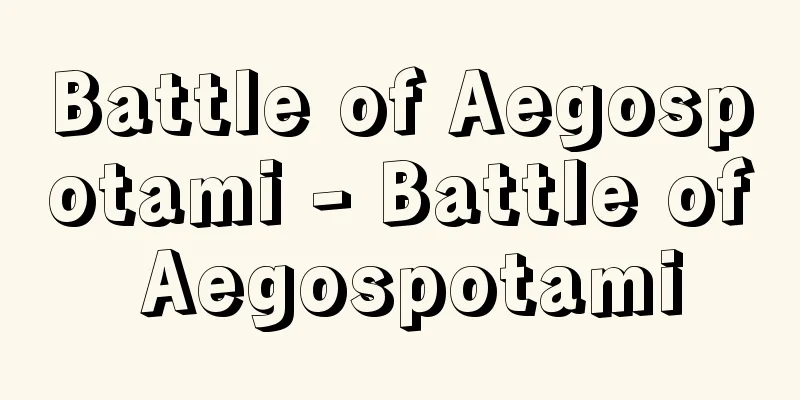Central Council for Education

|
This council was established in the Ministry of Education, Culture, Sports, Science and Technology by the Ministry of Education, Culture, Sports, Science and Technology Organization Order. It is abbreviated as the Chukyo-Sin. Until then, it had been located in the Ministry of Education, but was reorganized in January 2001 (Heisei 13) when the government ministries and agencies were reorganized. [Toshiyuki Omomo] HistoryIn order to promote educational reform after the Second World War, the Education Reform Committee was established in 1946 (Showa 21) as an advisory body to the Prime Minister. The committee was renamed the Education Reform Council in 1949, and in 1951 the Council declared the need for the establishment of a permanent advisory body for education, and in June of the following year the Central Council for Education was established through a partial amendment of the Ministry of Education Establishment Act. Since its establishment, the Central Council for Education has submitted many important recommendations on such matters as the improvement of compulsory education and social studies education, the maintenance of political neutrality of teachers, salaries for compulsory education school teachers, subsidies for private schools, the textbook system, the teacher training system, the expansion and improvement of upper secondary education, and in the 1980s and 1990s on the development of the foundation for lifelong learning and the reorganization of local educational administration, and these recommendations have had a major impact on Japan's education policies and reforms. Reports issued in the 1990s include "On establishing the foundations for lifelong learning" in 1990, "On reforming educational systems to respond to the new era" in 1991, "On the future of education in Japan with an eye toward the 21st century" from 1996 to 1997, "To foster the spirit to open up a new era" and "On the future of local educational administration" in 1998, and "On improving the connection between primary and secondary education and higher education" in 1999. [Toshiyuki Omomo] Reorganization in 2001Entering the 21st century, the Central Council for Education was also significantly restructured when government ministries and agencies were reorganized. Based on the previous Central Council for Education, it was re-established in the Ministry of Education, Culture, Sports, Science and Technology in January 2001 by integrating the functions of the Council for Lifelong Learning, the Council for Science Education and Industrial Education, the Curriculum Council, the Council for Training Teachers, the University Council, and the Council for Health and Physical Education. Its responsibilities are broadly divided into three areas. First, in response to inquiries from the Minister of Education, Culture, Sports, Science and Technology, it investigates and deliberates on (1) important matters related to the development of creative human resources with rich humanity, with the promotion of education and lifelong learning at their core, and (2) important matters related to the promotion of sports, and provides opinions to the Minister of Education, Culture, Sports, Science and Technology. Second, in response to inquiries from the Minister of Education, Culture, Sports, Science and Technology, it investigates and deliberates on important matters related to the development of opportunities for lifelong learning, and provides opinions to the Minister of Education, Culture, Sports, Science and Technology or the head of the relevant administrative agency. Thirdly, it is to handle matters that come under its authority based on the provisions of laws and regulations such as the Law on the Establishment of a System for Promoting Measures to Promote Lifelong Learning, the Science Education Promotion Law, the Industrial Education Promotion Law, and the Teachers' Certification Law (Article 86 of the Ministry of Education, Culture, Sports, Science and Technology Organization Order). The reorganized Central Council for Education will be composed of up to 30 members appointed by the Minister of Education, Culture, Sports, Science and Technology from among people with academic and practical experience (Central Council for Education Ordinance, Article 1, Paragraph 1, Article 2, Paragraph 1). The Council will have a Chairman, who will be selected by mutual vote of the members (Central Council for Education Ordinance, Article 4, Paragraph 1). In addition, the Council may appoint ad hoc members to investigate and deliberate special matters, and expert members to investigate specialized matters (Central Council for Education Ordinance, Article 1, Paragraphs 2 and 3). The Council will have five subcommittees: "Educational System," "Lifelong Learning," "Primary and Secondary Education," "Universities," and "Sports and Youth." The members, ad hoc members, and expert members to each subcommittee will be appointed by the Minister of Education, Culture, Sports, Science and Technology (Central Council for Education Ordinance, Article 5, Paragraphs 1 and 2). The Council and subcommittees may also have divisions, and the members, ad hoc members, and expert members to each division will be appointed by the Chairperson (or the Subcommittee Chairperson, in the case of a division within a subcommittee) (Central Council for Education Ordinance, Article 6, Paragraphs 1 and 2). [Toshiyuki Omomo] Temporary Education CouncilSeparate from the Central Council for Education, the Provisional Council for Education was established in 1984 as an advisory body to the Prime Minister. In its four reports, the council put forward reform guidelines such as the "principle of emphasizing individuality," "transition to a lifelong learning system," and "responding to changes" such as internationalization and the information society, and was dissolved in 1987. The reports of this Provisional Council for Education have influenced subsequent educational reforms and the deliberations of the Central Council for Education. [Toshiyuki Omomo] "Research Group on Educational Affairs, ed., Comprehensive Overview of the Central Council for Education's Reports, Revised Edition (1992, Gyosei)" ▽ "Takashi Haneda, Hirokazu Kato, and Masako Hosaka, eds., The Central Council for Education and University Reform (1999, Hiroshima University Center for University Education Research)" ▽ "Central Council for Education Handbook" (2000, Ministry of Education) [Reference items] | | | | | | |Source: Shogakukan Encyclopedia Nipponica About Encyclopedia Nipponica Information | Legend |
|
文部科学省組織令により、文部科学省に設置された審議会。中教審と略称される。それまでは文部省に置かれていたが、2001年(平成13)1月の省庁再編に伴い改組された。 [大桃敏行] 沿革第二次世界大戦後の教育改革推進のために、1946年(昭和21)に、教育刷新委員会が総理大臣の諮問機関として設置された。同委員会は49年に教育刷新審議会と改称され、同審議会は51年に教育のための恒常的な諮問機関の設置の必要性を声明し、翌年6月に文部省設置法の一部改正により中央教育審議会が設置された。中央教育審議会は、発足以来、義務教育、社会科教育の改善、教員の政治的中立性の維持、義務教育学校教員給与、私学助成、教科書制度、教員養成制度、後期中等教育の拡充整備などについて、また、1980~90年代には生涯学習の基盤整備や地方教育行政の再編などについて、多くの重要な答申を行い、これらの答申は日本の教育政策・改革に大きな影響を与えてきた。90年代の答申には、90年「生涯学習の基盤整備について」、91年「新しい時代に対応する教育の諸制度の改革について」、96~97年「21世紀を展望した我が国の教育の在り方について」、98年「新しい時代を拓(ひら)く心を育てるために」「今後の地方教育行政の在り方について」、99年「初等中等教育と高等教育との接続の改善について」がある。 [大桃敏行] 2001年の組織改変21世紀に入り、省庁再編に際して中央教育審議会も大きく改組された。それまでの中央教育審議会を母体とし、生涯学習審議会、理科教育及び産業教育審議会、教育課程審議会、教育職員養成審議会、大学審議会、保健体育審議会の機能を整理統合して、2001年1月、改めて文部科学省に設置された。その所掌事務は、三つに大別される。第一に、文部科学大臣の諮問に応じて、(1)教育の振興および生涯学習の推進を中核とした豊かな人間性を備えた創造的な人材の育成に関する重要事項、(2)スポーツの振興に関する重要事項、を調査審議し、文部科学大臣に意見を述べること。第二に、文部科学大臣の諮問に応じて、生涯学習に係る機会の整備に関する重要事項を調査審議し、文部科学大臣または関係行政機関の長に意見を述べること。そして第三に、生涯学習の振興のための施策の推進体制等の整備に関する法律や理科教育振興法、産業教育振興法、教育職員免許法等の法令の規定に基づき、その権限に属させられた事項を処理することである(文部科学省組織令86条)。 この改組された中央教育審議会は、学識経験のある者のうちから、文部科学大臣が任命する30人以内の委員で組織される(中央教育審議会令1条1項、2条1項)。審議会には会長が置かれ、委員の互選により選任される(同4条1項)。このほか、特別の事項を調査審議させるために臨時委員を、専門の事項を調査させるために専門委員を置くことができる(同1条2項、3項)。審議会には、「教育制度」「生涯学習」「初等中等教育」「大学」「スポーツ・青少年」の五つの分科会が置かれ、各分科会に属すべき委員、臨時委員および専門委員は、文部科学大臣が指名する(同5条1項、2項)。また、審議会および分科会には部会を置くことができ、部会に属すべき委員、臨時委員および専門委員は、会長(分科会に置かれる部会にあっては、分科会長)が指名する(同6条1項、2項)。 [大桃敏行] 臨時教育審議会なお、中央教育審議会とは別に、1984年(昭和59)に内閣総理大臣の諮問機関として、臨時教育審議会が設置された。同審議会は4次にわたる答申において「個性重視の原則」や「生涯学習体系への移行」、国際化や情報化の「変化への対応」といった改革指針を提起し、87年に解散した。この臨時教育審議会の答申は、その後の教育改革や中央教育審議会の審議に影響を与えている。 [大桃敏行] 『教育事情研究会編『中央教育審議会答申総覧』増補版(1992・ぎょうせい)』▽『羽田貴史・加藤博和・保坂雅子編『中央教育審議会と大学改革』(1999・広島大学大学教育研究センター)』▽『『中央教育審議会要覧』(2000・文部省)』 [参照項目] | | | | | | |出典 小学館 日本大百科全書(ニッポニカ)日本大百科全書(ニッポニカ)について 情報 | 凡例 |
<<: Central bank - chuo ginko (English spelling)
>>: Central cone - Chuo ka kokyu
Recommend
Kuwashita Nenki - Kuwashita Nenki
In the Edo period, this meant exempting land devel...
Trobriand [Islands] - Trobriand
A group of small coral islands located on the east...
Sanitary products - Sanitary products
A pad that catches menstrual blood during menstrua...
Annual sale - Nenkiuri
A form of medieval sales contract. A fixed-term sa...
Parasitic volcano
A volcano that is formed like a lump by an erupti...
Castilian Fields
...His ideas about time became even clearer after...
Girth
In wooden buildings, a horizontal member used at t...
Modern armor - Touseigusoku
A style of Japanese armor used in the early moder...
Coda - Coda (English spelling) Italian
A musical term. A section added to the end of a p...
Blue neck [species] - Blue neck
...Famous meat breeds include the Pekin (original...
Psychrometer - Hygrometer
A combination of a normal mercury thermometer and...
guard
〘noun〙 (guard)① To guard. To protect or defend. Al...
Madrazo y Agudo, J.de (English spelling) MadrazoyAgudoJde
…Born in Rome, died in Madrid. His father, José d...
Hiromichi Hagiwara
Year of death: December 3, 1863 (January 11, 1864)...
Canzona Ensemble - Gasso Kanzona
...Even in the Baroque period, it was not fully e...









